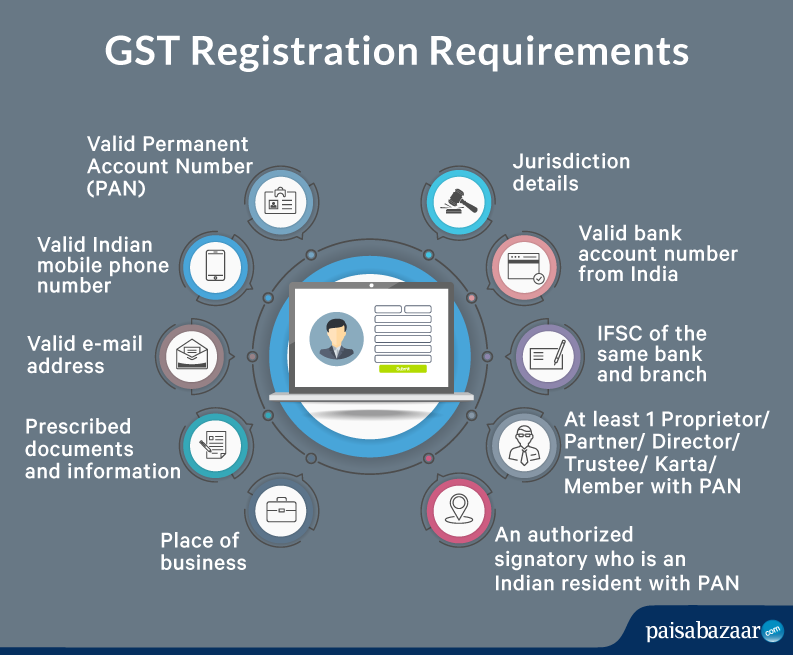How to Navigate Singapore GST Registration for Your Firm
How to Navigate Singapore GST Registration for Your Firm
Blog Article
The Ultimate Guide to Streamlining the GST Registration Process and Needs for Local Business Owners

Recognizing GST Fundamentals
To understand the fundamentals of the Goods and Solutions Tax Obligation (GST) system, small business proprietors need to initially recognize its underlying concepts and effects. GST is a value-added tax obligation levied on most items and solutions for domestic consumption. It intends to streamline the taxation process by changing multiple indirect taxes imposed by the state and central governments. Under the GST routine, organizations are required to gather and sign up tax obligation in support of the federal government, guaranteeing openness and compliance.
Among the key concepts of GST is input tax obligation credit rating, which enables services to declare credit score for taxes paid on their purchases. This system avoids the cascading result of taxes and advertises effectiveness in the tax obligation system. In addition, GST is a destination-based tax, meaning that the tax is imposed at the factor of intake instead of the factor of origin. This makes sure reasonable distribution of tax obligation income amongst states based upon where the services or items are eaten. Recognizing these fundamental concepts is vital for small company proprietors to browse the complexities of the GST system and make certain compliance with the regulation.
Qualification Requirements for Registration
Having developed a fundamental understanding of GST principles, tiny business owners need to currently meet particular qualification requirements to continue with the enrollment process. In India, entities participated in the supply of items or services with a yearly aggregate turn over going beyond Rs. 40 lakhs (Rs. 10 lakhs for special category states) are needed to sign up for GST. In addition, particular businesses such as those included in inter-state supply of products, laid-back taxed persons, and those required to pay tax under the reverse charge system must register for GST regardless of their turnover. Organizations that were signed up under the previous tax regime (VAT, solution tax, and so on) are also mandated to sign up under GST. Agricultural companies that just provide create out of primary production are excluded from GST registration. It is essential for local business owner to carefully evaluate their eligibility based on these criteria to guarantee compliance with the regulation and avoid any penalties for non-compliance.
Documents Needed for GST Enrollment

Simplified Registration Refine Steps
Adhering to the collection and confirmation of the requisite documents, the registration procedure for GST can be navigated through a collection of simplified steps created to assist in effective conformity for local business official website owners. The initial step includes going to the GST portal and selecting the 'New Registration' alternative. Ultimately, the applicant needs to fill up in Part A of the GST REG-01 form with information such as PAN, mobile number, and email address to obtain an OTP for verification. Once the OTP is gotten and gone into, a Temporary Reference Number (TRN) is produced for more process. The next step calls for completing Component B of the form with needed service information, publishing supporting records, and finishing the verification process using DSC or EVC. Upon effective verification, an Application Reference Number (ARN) is released, indicating the conclusion of the GST registration procedure. By adhering to these simplified steps, local business owners can successfully register for GST and ensure compliance with tax policies.
Tips for Ensuring Conformity
To maintain regulatory adherence and operational integrity, attentive oversight and positive procedures are essential in guaranteeing compliance with GST needs for tiny service owners. Little company proprietors should remain updated with GST laws, filing deadlines, and any kind of modifications in tax obligation prices to stay clear of charges and maintain a good standing with tax authorities. Attending GST recognition workshops or training programs can boost understanding and compliance with GST regulations, ultimately profiting the business in the lengthy run.
Verdict
Finally, small company proprietors must comprehend the essentials of GST, fulfill the qualification requirements, gather necessary papers, and comply with the simplified enrollment process steps to make certain conformity. By simplifying the GST enrollment process and requirements, local business owners can avoid fines and run their businesses smoothly within the legal framework - Singapore GST Registration. It is vital for local business owners to stay compliant and educated with GST guidelines to keep an effective service operation
Little company owners seeking GST registration should guarantee they gather and submit the essential papers to finish the enrollment procedure effectively. The documents required for GST enrollment usually include Extra resources evidence of business enrollment or incorporation, PAN (Long-term Account Number) card of the company address, entity and identity proof of the promoters/partners/directors, photographs, address evidence of the area of service, financial institution account declarations or terminated cheques, and permission forms. Participating in GST understanding workshops or training programs can boost understanding and compliance with GST guidelines, eventually benefiting the business in the lengthy run.
By simplifying about his the GST enrollment process and demands, small organization owners can avoid fines and operate their organizations smoothly within the legal structure. It is essential for little organization owners to remain compliant and enlightened with GST policies to preserve an effective company operation.
Report this page